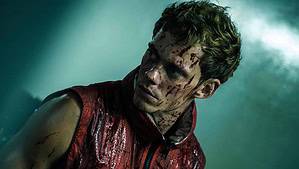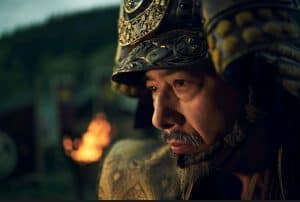Imagine the intrinsic responsibility and value that comes from having your name attached to something. People will see your signature and come to the conclusion that this means you have observed, approved of, and signed off on every single detail of whatever project or action that your signature is attached to. And when it comes to making movies this signature carries that tag of millions (sometimes hundreds of millions) of dollars. When, in actuality, most theatrical cuts veer far away from the original visions of those who directed them.
Producers, studio heads, and outside voices in social media can create pressure on filmmakers that results in many things being left on the cutting room floor or not being filmed at all. And yes, it is true that every film is made through compromise and collaboration, but it reaches a point where you begin to wonder why a studio would even hire a director if they were going to tie their hands and shoot down their visions so relentlessly. However, occasionally a director can please a studio and still see their true visions realized as well when they get to release their director’s cuts of their films.
In this article I am going to examine three of the most iconic and infamous director’s cuts in history (one being brand new), looking into what they went through during production, why the studios and directors butted heads, and how long it took for their visions to finally be released the way they intended. Join me as we dissect these victories in artistic visions.
Superman II: The Richard Donner Cut (2006)
In 1977, filmmaker Richard Donner set out on the highly ambitious task of directing Superman and Superman II simultaneously. This is a task that would be monumental for most filmmakers and it caused high tensions on the set between Donner and the producers Alexander & Ilya Salkind. they would butt heads over Donner wanting more control over the films and wanting final cut. The Salkinds grew frustrated with Donner’s lack of attention to the schedule and the budget. So, despite being 70% through filming of Superman II, it was suggested to Donner that he focus his attention on completing the first film while production would be suspended on part II. He agreed but had the full intention of returning to finish part II, especially after the roaring Success of ‘Superman’ in 1978. He admitted to waiting around for roughly six weeks to receive the go-ahead to finish the remaining 30% of part II. Instead he received a telegram with a simple, but crushing, message:
“Your services are no longer required”
He would go on to be replaced with Richard Lester who had been serving in a sort of mediator role between Donner and the Salkinds during the production to begin with. But, his elevation to the role of director resulted in Donner feeling betrayed and his crew on the verge of mutiny after building a loyalty to Donner during the lengthy production.
In order for Lester to get credited as the director for the film he would have to have filmed 51% of the final product. So, despite the film already having been 70% completed, Lester brought in his own writers and drastically altered the finally product. Things such as the opening terrorist scene, which had been removed by Donner and then added by by Lester. Lois Jumping into a river near Niagara Falls. But, one of the largest cuts was the removal of all scenes involving Marlon Brando. This was due to him having an apparent 11.75% cut of the box office for his role in the movie. What the producers were after was a film that would be finished quickly and cheaply, as opposed to Richard Donner’s tendency to go over budget during the original production. But, this resulted in a final product that was noticeably cheaper looking that its predecessor. Even though the film was a success when it was released most fans of Richard Donner and the character recognized the film as being far campier and lower quality than the first film.
For years it seemed that the Donner Cut would only be talked about as a Hollywood ghost story. A mystery never to be solved. Until the filming of ‘Superman Returns’, during production of this spiritual continuation of the original two films the production crew managed to come across the never-before-seen footage of Marlon Brando from Richard Donner’s cut. They were able to restore it and incorporate it into their film and this provided the proof needed to move forward with the restoration of this cut. However, it would happen mostly without the assistance of Richard Donner. Understandably so, I would say. he had been fired through telegram nearly 30 years prior and had to live with his butchered version for years. Even having the studio go so far as to make sure his name could legally not be put on the film. Regardless, fans celebrated this victory for him and allowed themselves to imagine a timeline where he had been able to release his cut theatrically in 1980.
Blade Runner: The Final Cut (2007)
It is hard to find many films that have had more of a lasting impact on film than Ridley Scott’s 1982 genre-bending cult classic ‘Blade Runner’. Based on the novel ‘Do androids dream of electric sheep?’ by Philip K. Dick, the film had a core storyline that followed old school detective movies in the same vain as the classic Humphrey Bogart films of the 1940’s. But, it included an incredibly creative and stylized world complete with holographic advertising, flying cars, and cybernetic beings known as replicants.
The film set out to take risks, such as being ambiguous on if the film’s main character Deckard was human or a replicant as well. The studio worried that general audiences would not respond to a film that kept its world so mysterious, which would hurt the film’s chances at the box office. One major change that the studio enacted was to gut much of the violence from the theatrical cut of the film. Things such as mangled bodies, and an infamous eye-gouging scene had to be cut at Scott’s detest. To Ridley Scott this was not just violence for the sake of violence, this violence was meant to serve as a biblical violence. Blood and suffering that connected the story more of a religious allegory, even considering Deckard himself to be a possible Judas figure depending on if you believe him to replicant himself.
However, the two most important differences are the unicorn dream sequence and the altered ending. In the unicorn dream we see Deckard fall asleep at a piano, and in his sleep he dreams of a unicorn running free in a field. This has been interpreted by many as a sign that he is in fact a replicant. The original ending hammers this in as Deckard stares brokenly at an origami unicorn and, in connecting it with the dream, possibly comes to the conclusion that he himself must be a replicant as well. In the studio mandated ending they cut this entirely and instead have Deckard riding off into the sunset in a tonally jarring happy ending.
Blade Runner is unique in the sense that it has seen upwards of seven (and a rumored eighth) alternate cuts. Even the titled ‘Director’s Cut’ was made mostly without the oversight of Ridley Scott. But, pretty much every fan of the film is in agreement that ‘The Final Cut’ is the definitive and canon cut of the film.
Zack Snyder’s Justice League (2021)
This brings me to now, the defining director’s cut movement of my life. I shall preface this by saying that I am unapologetically a supporter and admirer of Zack Snyder, both in his work and in who he is as a person. And as a lifelong DC fan I have been waiting my entire life to finally see a live action Justice League film and the one I got in 2017…yikes.
To start, in March 2016 Batman V Superman: Dawn of Justice was released in theaters…and we all know the story. It was torn apart by critics and film bloggers alike. This harsh response led WB to question if they wanted to continue with Zack Snyder’s vison for their universe. The issue with their worries is this, Justice League was well into the filming process by the time they started having these discussions. The studio interference in Zack’s filming began asserting itself even stronger. He had to be handed new script pages from Geoff Johns that would include a “lighter tone” in the form of more jokes and less of Snyder’s signature showcasing of horror elements in his films. The biggest example of this is the re-design of the villain Steppenwolf from a spikey-armored alien figure to a more grey humanoid. Snyder was understandably frustrated with all of these changes to his vision but he was determined to see the product through to the finish line. Until tragedy struck.
Early in the post-production process Zack and Deborah Snyder tragically lost their daughter Autumn. Upon this, and the studio’s relentless meddling into everything Zack was doing he decided he had to put his energy where it mattered. His family. And, while he did not intend to close the door on returning WB decided to close that door for him nd brought in ‘Avengers’ director Joss Whedon. What followed was an influx of toxicity, abuse, and general disregard for anything that Zack Snyder and his cast and crew had built. To begin, roughly 85% of the film was reshot, countless characters (many being played by actors of color), and the trio of Whedon, Johns and and Jon berg took it upon themselves to openly mock Zack Snyder any chance they had. The film was given a strict two hour runtime mandate (ridiculous for a tentpole team-up film) and was released as a complete Frankenstein monster of a film. Obvious reshoots, green screened actors, cheesy dialogue, and disregard for prior characterizations of these heroes. And for many, they assumed this would be it. But, the world is an interesting place.
For the following few years Zack Snyder would take it upon himself to periodically post black and white still images of scenes from his cut. A dedicated group of fans got a billboard erected in Times Square with the now historic hashtag #ReleasetheSnyderCut. The fans kept the energy high and Zack would keep us fed with more images and words in regards to his cut of the film. Then, on the 2 year anniversary of the film in November of 2019, the fans, the director, and the stars of the movie combined forces to absolutely break twitter. it was the most tweeted movie hashtag in Twitter history (and the movie was not even released or expected to be). This event definitely got some studio heads interested though, especially since they were releasing a new streaming service ‘HBO Max’ and would need content, but it was still not close to guaranteed. And then 2020 entered our lives.
With the arrival of COVID-19 movie productions began shutting down and it became very clear to HBO Max that they would need content badly now. And, to their good fortune, they just happened to have a practically completely unseen comic book blockbuster sitting in storage. So, on day in May where Zack Snyder decided to do a special live watch-along of his 2013 film ‘Man of Steel’ he broke our brains and announced that HBO Max would, in fact, release the Snyder Cut. And it was even more than we all could have dreamed. For they weren’t simply restoring what he had, they gave him $70 million to film everything that he wished he would have been able to film before. Bringing in Jared Leto and Joe Manganiello to reprise their roles of Joker and Deathstroke respectively and adding a few more surprises.
But, ‘Justice League’ wasn’t just an example of studio incompetence, it also resulted in legitimate abuse on the Justice League set and Ray Fisher has been bravely working to make sure all of those who contributed to this abuse are sorted out. The victory of Zack Snyder’s Justice League is far beyond just a movie. It is a victory for actors and crew members who had to come to work in a hostile environment. It is a victory for fans who were subjected to gaslighting and mocking from countless people for years just for believing in its’ existence. And, most of all, it is a victory for a man in Zack Snyder who had to go through the most painful experience any father can and had to see his blood, sweat and tears completely erased by the studio he worked for. On March 18th of this year the most drastic Director’s cut in film history will be released. because, this isn’t really a director’s cut. Zack Snyder’s Justice League is an entirely different film.
I will always be an advocate for a filmmaker’s fight to see their visions realized in their truest forms. Which director’s cuts are your favorites?

Born and raised in DFW Texas. 24 years old. Studied at Texas Wesleyan University. Positively love movies and love writing about them and everything that goes into them.











